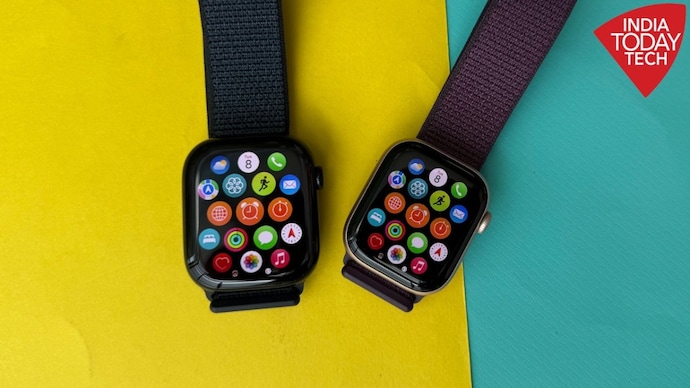Apple Watch may soon get hypertension detection feature
Apple is reportedly developing a high blood pressure detection feature for its Apple Watch, which is expected to launch in 2025.
listen to the story

It is already clear that Apple does not want its devices to remain just smart devices. With the iPhone, Apple Watch, and even AirPods, the company is aiming to make them more than devices; They are becoming health trackers. AirPods recently gained a hearing aid feature, while the Apple Watch is already helping users with features like ECG, SpO2, heart rate, and more. And next is hypertension detection, which we can expect to see in Apple Watches in 2025.
Bloomberg’s Mark Gurman has revealed in his latest newsletter that Apple’s next health tracker for the Apple Watch could feature high blood pressure detection. The feature has reportedly been in development for years and was initially planned to launch in 2024 Apple Watch models. However, its launch is now likely to take place in 2025.
High blood pressure, also known as hypertension, is a chronic condition where the force of the blood against the artery walls is persistently too high. Over time, if left untreated, this condition can lead to serious complications such as heart disease, stroke, and kidney failure. Traditional blood pressure monitoring involves an inflatable cuff that measures systolic and diastolic pressure.
However, according to Gurman, Apple’s approach to high blood pressure detection on the Apple Watch will be non-invasive and more trend-based. Instead of providing accurate blood pressure readings, the device will analyze the data and send alerts when the user’s blood pressure deviates from the normal range. “Instead of giving users a specific reading, the system will notify them if it thinks they are in high blood pressure,” Gurman mentions in his newsletter.
The feature will work similarly to the existing sleep apnea alert on the Apple Watch. By informing users about the risk of hypertension, this feature may prompt individuals to seek medical advice or use traditional cuff-based monitors for confirmation.
Apple could rely on sensors at the base of the watch that detect subtle changes in blood chemistry or vascular trends, such as the heart rate the device currently measures. This method will save users from the need for bulky equipment while providing actionable health insights.
Gurman says Apple’s plan to detect high blood pressure is in line with the company’s long-term ambition to introduce non-invasive blood glucose monitoring. Similar to high blood pressure detection, Apple also plans to create a glucose monitoring feature that aims to analyze chemical changes through light sensors, providing trends rather than exact readings.
Meanwhile, as for the new update to the Apple Watch, Gurman also revealed that the third-generation Apple Watch Ultra, due for 2025, could introduce self-contained satellite messaging capabilities. Currently, satellite communications on Apple devices requires an iPhone. However, the new Ultra model could allow users to send emergency messages and make calls directly from the watch in remote areas, without relying on a paired iPhone.





